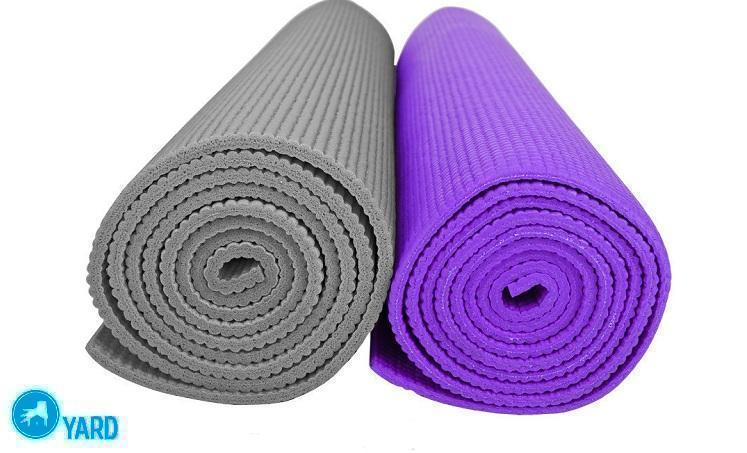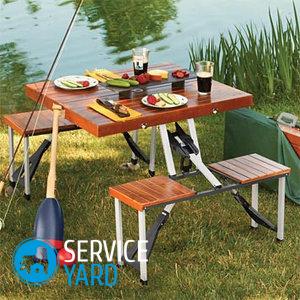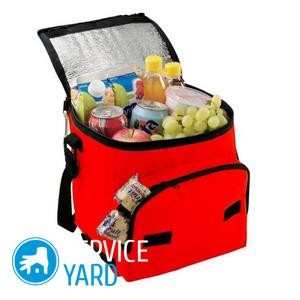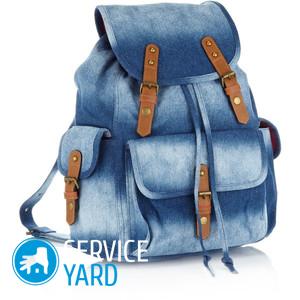Travel mat - what is it made of?
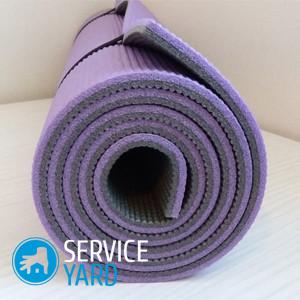
Those who love hiking and outdoor activities always take with them a huge amount of necessary things, clothes, dishes. But the most important thing is to worry about your sleeping place, for this you need a tent and a sleeping bag. But in order to avoid hypothermia, it is necessary to lay a special tourist rug on the ground - it is also called karemat or isomat. Now the market is full of different types. You can find the product is large and compact, designed for seating tourist rug. What a variant of this or that model is made of, whether it is possible to create such a useful thing in a campaign with your own hands - we will tell in this article.
to contents ↑Dimensions and thickness of the mat
The main objective of the karemat is to protect a sleeping or sitting person from moisture and cold. Even thin rugs easily cope with this task. They are made of polymers, which are endowed with excellent heat-insulating and waterproof materials.
Thickness
Of great importance for a comfortable stay is the thickness of this product. Naturally, the greater the thickness, the softer and more reliable the litter will be.
The thickness of the products is from 3 to 16 mm - it depends on the material of which the model is made, and the number of layers:
- Thick is a product with a thickness of at least 16 mm.
- There are inflatable rugs, their thickness can be 6-10 cm.
- For isomats intended for sitting, this value is 3-6 cm.
Width and length:
- The dimensions of a standard karemat are approximately 1.8-2 meters long and 0.5-0.6 meters wide.
- There are larger sizes, for example, 1.2-1.35 m with a standard length. Great for a double tent.
to contents ↑Important! Weight varies from 200 to 900 grams - it all depends on the manufacturer, thickness, material of the product. Models specifically designed for expeditions can weigh up to 4 kg.
What is a tourist rug made of?
The type of litter depends on the material from which it is made.
Consider what tourist rugs are made of:
- Loose to the touch, easily creasing, tearing rugs are made of polyethylene foam.
- Karemata, which have good insulating qualities, are made from foamed penofol.
- Litter with excellent heat-insulating properties, thick, wear-resistant, made of cross-linked isolon.
Ethylene vinyl acetate can also be used in production - this material has both excellent insulating properties and retains the softness of the product even at low temperatures. There is a drawback of coatings from this material - at high temperatures they are deformed.
Important! Rugs are smooth and corrugated in structure. It is better to use a corrugated structure - it does not absorb moisture and does not slip.
Self-inflating or inflatable tourist rugs are made of:
- Lung, while inexpensive polyvinyl chloride.
- More expensive and heavy rubberized fabric.
- UV resistant and durable polyester.
Can also be used:
- Quick-drying microfiber, but it is short-lived.
- Wear-resistant fluff, but it does not tolerate moisture.
- Durable polyurethane foam that collects air during inflation.
How many layers of mat are better?
When deciding on what to make a tourist rug from, how many layers should be in it, consider such features:
- The simplest isomats are made of two layers of polyethylene foam. Foil for insulation can also be used.
- There are also hard, while durable litter from a single layer of ethylene vinyl acetate.
- Rugs from three layers are a very rare thing, while being inferior to other carpets in thermal insulation. They are made from neoprene, polyethylene foam and ethylene vinyl acetate.
- We can consider two-layer and inflatable models. For coating use rubberized fabric, polyester or polyvinyl chloride. In the second layer, fluff, microfibre or polyurethane foam are used, designed to warm the product.
to contents ↑Important! There is an indicator of thermal resistance. The higher its value, the warmer it is. It is classified seasonally, namely:
- Indicator up to 3 - use only in the summer.
- From 3 to 5 - suitable for winter.
- From 5 - the all-season mat.
Types and methods of folding
Types of rugs:
- Karemat or isomats made in the form of a two-three-layer litter.
- “Seats” - warm and compact, designed for seating.
- Heavy and expensive, but at the same time soft mattresses or self-inflating rugs.
- Air mattresses that can only be used in summer.
There are such ways of folding the litter:
- Roll up a roll or tube. They are easy to clean, but they are quite voluminous.
- “Accordion” or folding. Very compact and easy to fit in a backpack, but they are more difficult to clean.
Tour mat selection
Much in the campaign depends on the correct choice of karemat.
Important! Self-inflating karemata are very popular. Their only drawback may be the fragile valve, which can deteriorate over time.
When buying bedding, pay attention to:
- The size that suits you. If your tent is double, choose an appropriate mat size.
- Thermal resistance and product thickness. All-season products will be the warmest. The life will depend on the thickness - the thicker, the longer.
- Product weight. The farther the hike distance, the easier the mat to choose.
- Folding method. The most convenient is the karemat, rolled up into a roll, which can easily be attached outside the backpack.
- Colors. A very large selection is provided on the market, there are also rugs with children's drawings.
to contents ↑Important! The type of rug depends on your needs. Foams will be more convenient to transport, self-inflating models will become soft and comfortable, and for so-called out-of-town trips, the so-called “seats” will do.
Product cost
The price of the product depends on the manufacturer and popularity. Foreign models will be many times more expensive than domestic ones. For example:
- German brands will cost about 180-190 dollars. They have excellent characteristics and quality.
- The price of medium-quality products is about 110-120 dollars.
- Budget models - up to 95 dollars. But also you can easily find options worth about $ 10 - the quality of such a product will not be very high, but affordable for everyone.
to contents ↑Important! Additionally, you can purchase a cover - the cost of such products is low, about 2-3 dollars.
Do-it-yourself karemat
Do-it-yourself really good do-it-yourself rug, assured experienced travelers:
- To do this, you need sheet or rolled polyethylene foam, its thickness should be at least 8 mm. Kapron ribbons, which will need to stitch several sheets together.
Important! Such a product will be very easy to transport, as it easily folds into an accordion.
- Based on polyester, you can sew a cover for a karemat. Using a zipper, buttons or Velcro, the cover can be closed.
to contents ↑Important! Such a rug can be used not only on hikes, but also at home for fitness or yoga.
Stock footage
Having considered all the types and options of what tourist rugs are made of, it becomes obvious the need for their use in hiking and even at home. Fans of outdoor activities and outings on a picnic are impossible to do without them. Approach your choice very carefully so that it meets your needs and does not disappoint.



